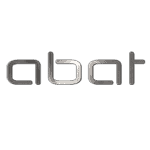Expensive cloud losses


Ex-SAP employee Werner Dähn, one of the most savvy analytical observers in the SAP community, commented: "I'm not happy with axiomatically equating public cloud with high margin, because there is an important constraint to that: The cost of each additional customer must be zero."
Cloud computing cannot be a savings for existing SAP customers on the one hand and a lottery win for SAP on the other. Naturally, there may be economies of scale in a positive sense, resulting in operating costs below those of an in-house data center - but these effects have been familiar to SAP's existing customers for many years in the areas of outsourcing and hosting. Here, there were legendary CIOs who often had lower operating costs than comparable hosters. So the questions Werner Dähn asks are legitimate: "If SAP gains another S/4 customer, does he run on the existing servers? Does it not require any support?"
Dähn's response: "The customer certainly generates additional costs - to quite a large extent. To make matters worse, public cloud software has a significantly higher complexity and therefore higher costs. Furthermore, customers are not prepared to pay n times as much as before just to hand over the operation of the software. So reduced to this aspect, SAP does not have a public cloud, but an outsourcing offering."
Apparently, SAP CEO Christian Klein has a similar view of the situation. To the great displeasure of the DSAG user association, SAP wants to increase cloud subscriptions with a fixed index of plus 3.3 percent annually. Werner Dähn doubts whether the calculation will work out for SAP. He does not see a significant improvement in margins with a doubling of cloud sales. And the ex-SAP manager says: "Funnily enough, on-prem is better! Software was created, 20 percent of the list price was collected as maintenance costs per year, and the operating costs were borne by the customer in the form of hardware and personnel. In this model, if the number of customers doubles, the revenue doubles, the costs stay the same, and the margin approaches 100 percent."
Analysts confirm this on-prem view and have calculated that in the traditional license business SAP has a margin of well over 80 percent. Werner Dähn concludes by asking the rhetorical question: So what happens to the margin if you abandon the on-prem business and move everything in the direction of the SAP cloud?
As a clarification, it must also be emphasized that in many cases, existing SAP customers no longer have a choice, see IBP, Integrated Bussines Planning for Supply Chain. This SAP software replaces the well-known APO (Advanced Planner and Optimizer), is much more powerful and functional - but can only be obtained as a cloud offering, see also the E-3 cover story by SAP partner Consilio in the September 2022 supplement of Manager Magazin.







1 comment
Christian Podiwinsky
Der Siegeszug von SAP beruht auf der Unterstützung von allumfassenden betriebswirtschaftlichen Funktionen für alle gängigen Branchen, der bedingungslosen Prozess- und Datenintegration von durchgängigen Unternehmensprozessen und EINER einheitlichen logischen Datenbank. Die Kunden erwarten auch eine permanente Weiterentwicklung von Softwareanwendung und Technologie. Das bezahlen sie ja auch mit den doch geschmalzenen Wartungsgebühren (alle 5 Jahre werden die Lizenz-Einstandsgebühren bezahlt). Solange das kompromisslos im SAP-Standard umgesetzt wird, nehmen die Kunden mangelnde Oberflächenmodernität, umständlicheres Handling und eine manchmal verschrobene Bedienung in Kauf. Speziell im Mittelstand will man seine Key-ERP-Applikationen entweder auf eigenen Rechnern oder in Near-by-Rechenzentren, zu denen man auch persönliche Beziehungen hat, ablaufen lassen.
Der Zukauf der neuen Firmen um 26 Milliarden Euro (gesponsert unter anderem von den Wartungsgebühren der Kunden) brachte den Bestandskunden des operativen SAP kaum Mehrwert (die Systeme sind auch bei weitem nicht so integriert, wie es SAP-Anwender gewohnt sind). Mit der In-memory-Datenbank S/4 HANA könnte man aufgrund deren immens gesteigerten Datenmanipulationsgeschwindigkeit – aufbauend auf den bestehenden Funktionen und logischen Datenbanken – enorme betriebswirtschaftliche Funktionserweiterungen entwickeln (z.B. Verfügbarkeitsprüfung, simultane Planung, Kapazitätsanalysen und daraus abgeleitete Produktionsvarianten, Preisvergleiche, Reporting und Analysen mit KI-Komponenten…). Mithilfe der modernen Low-Code-/No-Code-Technik könnte man die Integration sowohl zum Produktionsshopfloor als auch Entwicklungen zur Kunden-/Lieferantenkommunikation, an Anforderung unterschiedlicher Fachbereiche angepasste Oberflächen und vor allem auch durchgängige Workflow-Abwicklungen und viele schnelle individuelle Transaktionsoberflächen und Reports schaffen, ohne die bedingungslose Integration und Funktions-/Prozess- und Datenbankeinheitlichkeit zu verlieren. Das wäre die logische Weiterentwicklung der SAP gewesen, wie es sich auch sehr viele Kunden erwartet und gewünscht hätten.
Aber nein – SAP kaufte Software zu, die in allen Belangen Fremdkörper zum erfolgreichen ERP waren und jetzt wollen sie – aus betriebswirtschaftlicher Sicht der Kunden vollkommen unbegründet – in Cloud-Lösungen mit einem Mietmodell, die hardwaremäßig vollkommen anonym irgendwo bei SAP laufen. Meinen Berechnungen zufolge sind die Total Cost of Ownership von SAP-ERP-Software ab dem fünften Jahr höher als bei einer On-demand-Lösung. Und ERP-Systeme laufen 10 bis 15 Jahre mindestens. Noch dazu bringt die S/4-HANA-Release – im Vergleich zur letzten R/3-Release – kaum wirklich wesentliche betriebswirtschaftliche Goodies. Schön ist natürlich, dass Reports und andere Datenbankoperationen um ein x-faches schneller ablaufen. Aber was bringt den Fachbereichen die sogenannte Simplifzierung der Rechnungswesen-Tabellen in Form der einheitlichen ACDOCA? Oder wozu brauchen Rechnungsprüfer, die täglich 100 Eingangsrechnungen erfassen, langsamere Fiori-Apps?
Die SAP braucht sich daher nicht wundern, dass ihre Neuerungen – inklusive der Cloud-Lösungen/Cloud-Produkte – nicht so gut ankommen. Besser wäre es, sich zu überlegen, was die gestandenen Stammkunden wirklich wollen und wofür sie bereit sind – basierend auf betriebswirtschaftlichem Nutzen – mehr Geld auszugeben (siehe oben).